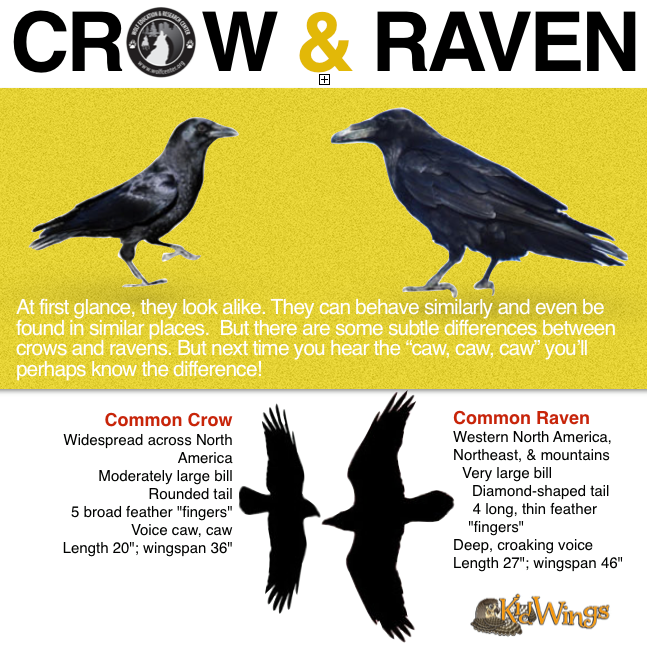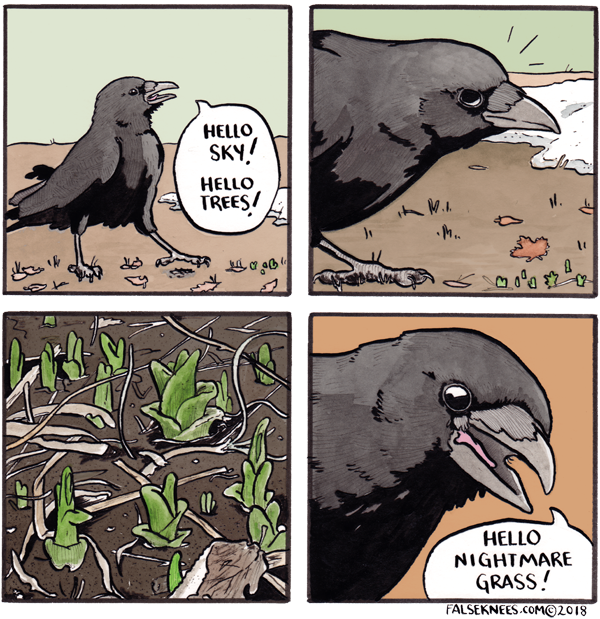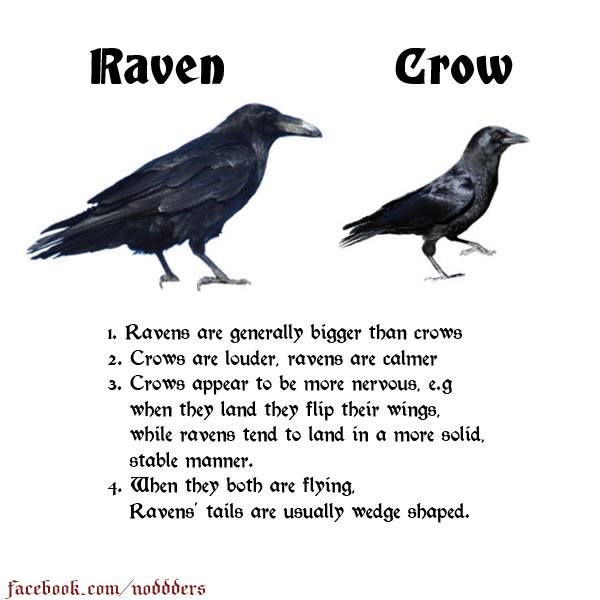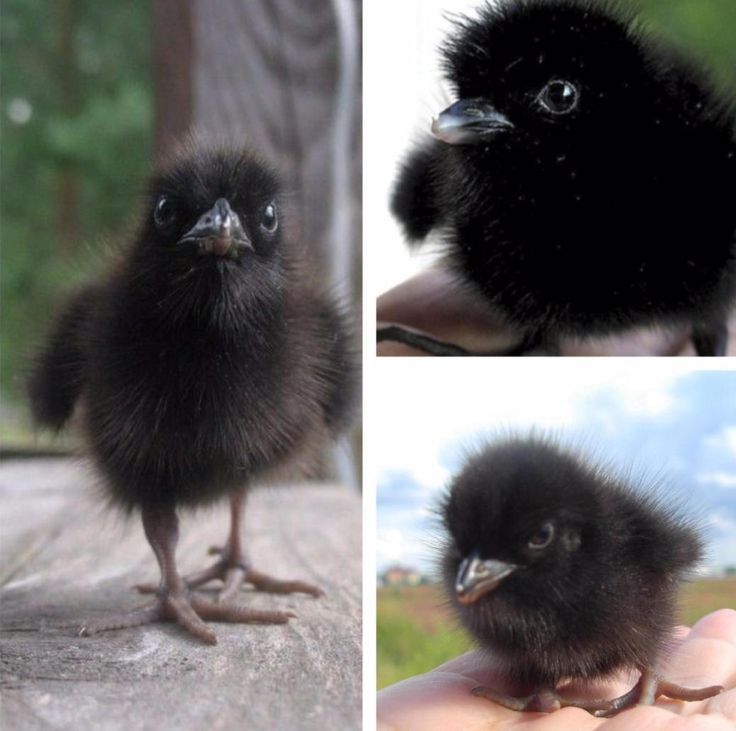What to feed a baby crow
How to Care for a Crow That Can't Fly
By Deborah Whistler | Updated September 26, 2017Things You'll Need
Large box
Oatmeal
Ground beef heart
Hard-boiled egg yolk
Avian vitamin supplement
Turkey starter
High-protein dog food or puppy chow
Unsalted peanuts
Corn
Sunflower seeds
Fresh fruit
Mealworms
Crickets
If you come across an orphaned or abandoned crow, you should first be sure it is indeed in need of assistance. Fledgling birds that have left the nest are often unable to fly and remain on the ground. The baby crow’s parents may be nearby and still caring for it. Observe for a while to see if the parents return. If not, or if the bird is in danger of predators, rescue it. First check to see if you can take it to a local wildlife rehabilitator. If no one is available to care for the bird, you can hand raise it for release when it’s old enough to fly or survive on its own.
Line a large box with newspaper to house the bird. Place a small bowl of water in the box for the bird to drink from.
Prepare a mixture of oatmeal, ground beef heart and hard-boiled egg yolk. You can add an avian vitamin supplement with calcium to promote bone growth.
Put a glob of the mixture on your finger and insert it into the baby crow’s gaping beak.
Stick your finger well into the bird’s throat as the mother bird would with her beak. This stimulates the swallowing reflex in the baby. Fed the bird every three to four hours in this fashion until it is 6 weeks old.
Begin offering other foods at 6 weeks. Crows are omnivores, and will eat almost anything, so are somewhat easier to raise than most baby birds. Youngsters need a diet that is at least 25 to 50 percent protein. Turkey starter is a good beginning to the diet. High-protein dog food or puppy chow is also good and usually easier to obtain. Continue feeding hard-boiled egg yolks. Other good foods are unsalted peanuts, corn, sunflower seeds, fresh fruit, and mealworms or crickets.
Keep human contact with your young crow as limited as possible and maximize its exposure to the local crows. Take it outside and let other crows investigate. It will stand a better chance of survival when released if it is accepted into a crow family.
Release the crow at about 8 weeks of age. Once it can fly, it should be released. The bird will likely stick around and beg to be fed. But by fall it will hopefully integrate with a flock.
Warnings
Keeping a crow as a pet is illegal without a permit.
Do not feed the crow too many mealworms; they are high in chitin and can cause blockages.
All birds are lactose intolerant, do not feed baby crows milk or cream of any kind.
References
- American Society of Crows and Ravens: How do I Take Care of a Pet Crow or Raven?
- Cornell Lab of Ornithology: Baby Crows
- Crows: "Orphan" Crows
Photo Credits
What Do Baby Crows Eat?
As an Amazon Associate I earn from qualifying purchases.
Crows have a long and sometimes ominous history with humans. Crows are one of the rare bird species to not only recognize people but also form friendships with them.
The lives of crows are intricately linked with ours in many ways, despite their unfortunate connection with the macabre. Our efforts are reciprocated; nevertheless, it’s only natural that our attempts would eventually lead to our bird friends being acquainted.
It is one of the most effective methods of winning over animals’ affections. It’s important to feed them. Many species may be seen as an ethical issue of whether or not you are assisting them, although it makes little sense to treat every creature equally.
Because different species have unique problems, there is no one-size-fits-all solution. Consider if the birds are in danger, whether the food is appropriate, and whether feeding them will modify or exacerbate their behavior before going any further.
What Do Baby Crows Eat?Crows are quite capable of looking after themselves. They’re intelligent enough to smash the shells open with pebbles or other hard surfaces, revealing the food inside. They can also use leaves as tools to extract insects from hiding places. Baby Crows, on the other hand, require expert care and attention after weeks or months of starvation. Even so, when crows are orphaned or during times of extreme hunger when food is unavailable, they may utilize some assistance in locating food. Crows will eat just about anything; they’re not difficult to feed.
They’re intelligent enough to smash the shells open with pebbles or other hard surfaces, revealing the food inside. They can also use leaves as tools to extract insects from hiding places. Baby Crows, on the other hand, require expert care and attention after weeks or months of starvation. Even so, when crows are orphaned or during times of extreme hunger when food is unavailable, they may utilize some assistance in locating food. Crows will eat just about anything; they’re not difficult to feed.
Crows will eat a variety of seeds, including black oil sunflower seeds and pumpkin seeds. When meat scraps and kitchen leftovers are not accessible, they will, however, consume these seeds. Simply distribute the seeds in your yard to feed them.
Nuts NutsCrows love a wide range of nuts, including peanuts, hazelnuts, walnuts, pecans, almonds, and more. You may also offer them unshelled peanuts. They consume unsalted and sugar-free peanuts.
Baby crows eat a wide range of fruits, including apples, oranges, bananas, raisins, grapes, and other things. They may also consume a variety of wild fruits including dogwood, wild cherries, and wild grapes, berries, poison oak leaves, and figs. Baby crows, however, do not like fruits as much as other foods. If you want to provide crows with different fruits, go to your local fruit store and get some. Instead of that, offer them dried nuts.
Berries BerriesCrows adore strawberries, which are one of their favorite foods. Crows enjoy eating a wide range of wild berries, including pokeberries, cranberries, juniper berries, blueberries, bayberries, and others. They tend to eat more fruit when their normal food sources are limited.
Vegetables VegetablesCrows like vegetables in addition to fruits and berries. Crows consume a variety of veggies including pumpkins, peas, beans, potatoes, peppers, and other kitchen edibles. If you want to wean your baby crows off meat and replace it with vegetables, however, switching them to veggies might be difficult.
If you want to wean your baby crows off meat and replace it with vegetables, however, switching them to veggies might be difficult.
Crows consume a variety of grains, such as corn, wheat, rice, barley, oats, millet buckwheat, sorghum, and more. When these blackbirds can’t discover anything dead or small animals to eat, they feed on grains.
Eggs EggsCrows like to eat chicken and duck eggs, unlike other birds. When the chickens and ducks aren’t around, they sneakily go into their nests to steal their eggs. If you’re willing to feed your crow’s eggs of a chicken or duck, then make sure to place them in your yard where it’s safer.
Insects An InsectCrickets, beetles, grasshoppers, locusts, spiders, snails, earthworms, mealworms, caterpillars, grubs, and a variety of other insects are included in the baby crow’s diet chart. Crows benefit our environment by eating these insects. Some people may find it difficult to purchase mealworms or crickets for crows because they do not provide any food for crows. However, they can consume the insects in your yard if you give them enough time.
However, they can consume the insects in your yard if you give them enough time.
Crows enjoy a variety of unhealthy foods, such as pasta, chips, popcorn, crackers, scallops, and so on. In the event of an emergency, you can also offer crows cookies. These blackbirds dislike salted junk food, though. So ensure that they have unsalted alternatives.
Meat MeatCrows are omnivores that feed on everything from automobile wrecks to garbage. These blackbirds, on the other hand, prefer discarded poultry and duck fat. You may also give them local butcher shops’ raw suet. Don’t give them ham or sausage, as well as salted meat and cheese. Instead, make sure the meat is unsalted and the fat is cut into tiny pieces if possible.
Dog Food Dog FoodMany people believe that baby crows can’t consume dog food. If you want to offer your bird friends some dog food, wet or dry, make sure it’s been moistened first. This is because dry dog food might cause choking among crows.
This is because dry dog food might cause choking among crows.
Baby crows need a lot of water to drink while consuming food, especially on hot days. You may have observed a crow drinking water in a modest birdbath. If you like having crows visit your yard, keep clean drinking water available for them. Baby crows will also wash in the water.
Is it Illegal To Feed Baby Crows?That all depends. It is expressly prohibited in many jurisdictions to feed or leave food out for wild animals on purpose, resulting in annoyance. Before making any decisions, check with your local legislation. However, if you’re certain, try feeding them a range of things until you discover one they prefer.
How To Feed Baby Crows? A Crow in The WildStep 1: Create A Safe Environment For ThemCrows are difficult to approach, owing in part to their intelligence and the fact that they can be sour and unsociable. Although they will not come immediately to people, they may become more accustomed to them with time. Crows will look for a quieter location where food is readily available if they sense danger or uncertainty in their surroundings.
Although they will not come immediately to people, they may become more accustomed to them with time. Crows will look for a quieter location where food is readily available if they sense danger or uncertainty in their surroundings.
Crows are typically found in open areas, therefore make your backyard more appealing to them by keeping it clean of trash and any noisemakers like cars or other noisy elements. They should be far enough away not to alarm them. To create a secure environment, eliminate any dangers.
Step 2: Offer Them Their Favourite FoodsCrows are opportunistic omnivores that will sample from a variety of food sources before settling on one they enjoy. They can eat almost anything, but make sure you provide them with good options.
Crows’ favorite foods include small pellet dog or cat food, unsalted peanuts, eggs, other seeds and nuts, vegetables and fruits, and even chicken and other meats. However, keep in mind that crows can be picky, so if they become accustomed to a specific diet, they will ask for it on a regular basis.
Being dependable is one of the most crucial factors in gaining a crow’s confidence. Feeding on a regular basis is one method to do this. Establishing a feeding timetable helps your behavior become predictable, and the crows anticipate your arrival. This rhythm helps the connection gel and trust development.
Step 4: Set Up A Bird Bath For WaterCrows require water as much as any other bird species. Provide them a location to not only cool off, but also bathe, drink, and even wash their food by adding a birdbath to your yard. When buying a birdbath, keep in mind that crows are enormous. A deeper basin will be required, as well as a stout ledge for their talons to grip, given their size.
Step 5: Experiment With The Type of Foods They Can EatIn your effort to establish a corvid friendship, you’ll need to be patient with these curious creatures. Crows are logical by nature, and it might take them some time to evaluate and interact with you. Once they feel at ease, crows will inspect almost any food you offer them.
Once they feel at ease, crows will inspect almost any food you offer them.
If no one is interested in what you’ve overlooked all day, it’s probable that they don’t like the food. You’ll need to try something different if crows are completely avoiding their favorite foods. Crows will flock to their favorite snacks, so experiment with various choices until you find out what to offer crows in your region.
Step 6: Give Them Space!Crows are smart, curious, and instinctive. Nevertheless, they are wild animals that must be treated with caution. Your objective is to admire these unusual birds from a safe distance, rather than taming or creating an abnormal dependence on them. To keep the limits secure for both us and them, keep a safe distance by observing them from a healthy standpoint.
What Are The Natural Predators of Baby Crows?Both crows and ravens are predators as well as prey. A murder of crows can overwhelm and dive-bomb hawks and eagles, making them predators. These birds can also kill songbird nestlings and even their parents. They can also break and consume other birds‘ eggshells.
These birds can also kill songbird nestlings and even their parents. They can also break and consume other birds‘ eggshells.
What are predators of crows when crows are prey? Let’s find out!
HawksHawks are one of the crow’s natural predators, and they frequently attack crows during the day. The majority of these raptors target fledgling crows, especially nestlings and fledglings. This is why so few young crows become adults.
EaglesBaby crows are vulnerable to the attacks of eagles, which is why they are sometimes called “crow killers.” Eagles frequently attack crows, especially when they’re away from their flock and on the ground. This is due to the fact that crows in flight are more powerful than eagles.
FalconsFalcons, like hawks and eagles, are the crow killers. Nonetheless, falcons are less inclined to attack crows than hawks and eagles. A fast chase between falcons and eagles is usual in order to push each other away from carrions.
Crows may be killed by great horned owls, particularly during the night when the birds roost in groups. Owls hide in evergreen trees and pounce on the crows as soon as they enter their sight. Crows’ brains are delicious to them.
RavensA crow does not beat a raven in a one-on-one fight because crows are almost half the size of ravens. Ravens are predators of crows in North America. If they can, they may burst and consume eggs from crow nests.
KingbirdsKingbirds occasionally chase and attack crows, pouncing on the birds and seating them to drive them away from kingbird nesting territory or food sources. They’ll even mob the crows to defend themselves and their young.
RaccoonsRaccoons are one of the crow-eating mammal predators. They have been observed attacking, murdering, and eating crows, particularly fledglings and nestlings. When parent crows aren’t present in their nests, raccoons are more likely to steal crow eggs.
Bobcats, feral cats, and household cats are all predators of crows in North America. The cats can retaliate against the murders of crows.
SquirrelsCrows are frequently the target of squirrel attacks, particularly young crows and their eggs. In a fight, adult crows are not swayed. Because it’s uncommon for crows to kill tiny animals, a murder of crows might consume a squirrel and eat it.
OpossumsOpossums, like squirrels, are likely to prey on fledgling crows and their unhatched eggs. Opossums eat the eggs if given the opportunity. These tiny creatures, on the other hand, maybe driven away by a large flock of crows and killed.
FoxesIf you’ve ever heard that a fox has captured and eaten a crow, it’s true. However, it is quite unusual. Foxes may prey on ground crows, their nestlings, and unhatched eggs if given the opportunity.
DogsIf a dog is near to the nests, fledglings, and eggs of crows, the birds consider the canines as predators. When crows confront dogs, they usually win. You may have seen a dog carrying a dead crow in his mouth, though.
When crows confront dogs, they usually win. You may have seen a dog carrying a dead crow in his mouth, though.
Because crows consume carrion and trash, many individuals think they should not be eaten. Crows, on the other hand, are edible. You can eat them without getting sick. They have a flavor that’s comparable to that of a goose, duck, or other dark meat bird.
The flavor of crows is affected by how well they are cared for. If properly prepared, they will taste good; if not, they won’t. Some people say that because crows eat almost anything, they can’t be eaten, but this isn’t true.
Amazon and the Amazon logo are trademarks of Amazon.com, Inc, or its affiliates.
How to feed a crow that has fallen out of the nest - tips
A crow that has fallen out of the nest has a better chance of survival with the participation of a person. Feeding a raven chick is easy. It is important to follow a certain diet, feeding regimen and avoid certain foods. This bird has a sufficient supply of vitality, you need to take a little care of it: first teach it to swallow food, and then eat on its own. Ravens are highly intelligent and quickly get used to people. Some birds remain good friends in the house forever.
This bird has a sufficient supply of vitality, you need to take a little care of it: first teach it to swallow food, and then eat on its own. Ravens are highly intelligent and quickly get used to people. Some birds remain good friends in the house forever.
Permitted products
When the chick has not yet opened its eyes and is weak, feeding is done with a syringe or tweezers. The lump of food must be placed further away in the beak to provoke the swallowing reflex. Soon the bird realizes that it is being fed, and begins to open its beak itself, asking for food. The question of what to feed the crow requires detailed study.
It is convenient to feed the crow at home with wet mixtures - mash. Their basis is grated carrots and cereal flakes steamed in boiling water. Carrots allow you to saturate the chick with nutrients and moisture. The proportion of carrots in mixtures should be 30-40%. In addition to carrots, turnips or rutabaga also serve as the basis of the mash.
Flakes can be oat, wheat, corn, buckwheat, barley, rye. They are poured with boiling water and cooled to body temperature - 36-37℃. Lumps of the mash should not be sticky, otherwise it is difficult for the chick to swallow them. The share of cereal flakes in the mixture is 30%. When the bird begins to eat on its own, the flakes are changed to boiled cereals from the same grains, boiled in water without salt and sugar.
Protein sources have been indispensable ingredients in formulas since the early days. This is the egg yolk of a hard-boiled egg, minced meat or fish, fat-free cottage cheese. The share of these products in mash should be 30%. In the first weeks of life, ready-made meat purees for baby food are suitable for the chick: with turkey, veal, chicken.
In nature, crows feed their chicks with earthworms and various larvae. At home, you can give a crow of flour worms, ant eggs, dry ground gammarus.
Additional components of the mixers: calcium supplements and vitamins. The metabolism of chicks is intense, therefore, in the absence of the necessary substances, for example, vitamin D or riboflavin, ailments quickly occur. The bird may not get up for a long time or there is a curvature of the paws. An overdose is also dangerous. It usually occurs if the bird is given vitamins intended for humans. It is necessary to carefully calibrate the dose of drugs.
The metabolism of chicks is intense, therefore, in the absence of the necessary substances, for example, vitamin D or riboflavin, ailments quickly occur. The bird may not get up for a long time or there is a curvature of the paws. An overdose is also dangerous. It usually occurs if the bird is given vitamins intended for humans. It is necessary to carefully calibrate the dose of drugs.
Supplements with important elements should make up 5-10% of the feed. It is good to use bone and fish meal, chalk, crushed eggshells, crushed germinated wheat grains, multivitamins from a pet store.
Thus, the ratio of products in mixtures should be as follows:
- 30-40% - fiber;
- 30% - grain;
- 30% protein;
- 5-10% - vitamins, minerals.
Liquids
As long as the chick is not eating on its own, it does not need to drink water or any other liquid. The necessary moisture enters the body with solid food. Drinking it from a syringe in the first weeks is even dangerous because it can choke.
When the crow starts to eat on its own, you can put a saucer of water freely available to it. The water must be soft. Do not offer your chick tap water that contains chlorine, even in small quantities. It is optimal to use purified or purchased water heated to room temperature.
What not to feed the crow
Some foods are contraindicated for the chick. Giving them even in small quantities is dangerous for the life of the bird. Among them:
- milk;
- sweets;
- salty foods;
- fried foods;
- fatty foods;
- smoked products;
- juices;
- exotic fruits.
Diet
In the first two weeks after hatching, the chick is weak, lacks thermoregulation and needs frequent feeding and additional heating. During this period, the crow needs to be fed every 1.5-2 hours in small portions. The break is done only at night. In the period from 12 am to 6 am, the chick is not fed, it is constantly in the nest prepared for it from soft natural fabric. The grown chick is fed 3-4 times a day.
The grown chick is fed 3-4 times a day.
The chick defecates every time it eats. He shakes his tail, raises his tail so that the litter is outside the nest. At this point, it is advisable to prepare toilet paper in order to remove the litter immediately after feeding. After a night in the "nest" the litter is changed every day.
What to do if you picked up a baby crow? | Animals
Nature burst into my life in May, when on the sidewalk near the house I found a crow that had fallen out of its nest. There are not many answers on the Internet to the question of what to do with the found crow, so I will share with you everything that I have learned from my own experience.
Around April, chicks hatch in crow nests. It should be noted that crows have chicks once a year. And in mid-July, they gain independence. And everything would be fine, but only crows, fearing cats, build their nests at the height of a nine-story building. And when little crows strive to know this world, they often fall out of the nest and become crippled.
And everything would be fine, but only crows, fearing cats, build their nests at the height of a nine-story building. And when little crows strive to know this world, they often fall out of the nest and become crippled.
If you are not indifferent to the rescue of animals, and you have found a crow, first of all inspect it. If he is visually safe and sound, there is an option to grow him up at home until he can live on his own, that is, until about August. Because there is no way to launch it back into the nest. But most often, when falling from the nest, crows still do not remain unharmed - a wing or beak can be dislocated.
If you see that there is a problem with the beak or wings, you should immediately take the chick to the veterinarian. The fact is that within six days the bones of birds grow together, and six days after the fracture, the bone can no longer be set, it will have to be broken again. The clinic is not an ordinary one, birds are treated where there are ornithologists. Find out in your city where you have such a specialist.
The clinic is not an ordinary one, birds are treated where there are ornithologists. Find out in your city where you have such a specialist.
If your pet survived the fall, then you need to think about where to raise it until August. The thing is, he doesn't know how to eat. And he will have to feed 3-4 times a day.
I fed my baby crow with a teaspoon. He croaked and opened his beak wide, wide, and I threw food into his mouth from a spoon.
What to feed the little crow? Crows are predators. And meat must be included in their diet. Here you need to know a few things.
Ravens should never eat fat, salt or sugar!
It's great to boil lean meat, grind it, add low-fat cottage cheese, stir in such a porridge and go. You can add grated fruits, you can cook rice or some other cereal, but do not forget about meat. If the chick is not fed meat, it will become emaciated and may become ill from malnutrition.
You can add grated fruits, you can cook rice or some other cereal, but do not forget about meat. If the chick is not fed meat, it will become emaciated and may become ill from malnutrition.
He eats a little: a few teaspoons at a time.
Where to keep the chick? I kept mine on a glazed balcony, this is the best option. If there is no balcony, then it is possible in the apartment, but in the aviary. It is good to build a nest for him in a box.
The aviary is needed so that the chick does not pollute everything around in the apartment. But, in principle, if you become so attached to your little crow that you decide to keep him permanently, then you can teach him to go to the toilet in one special place.











